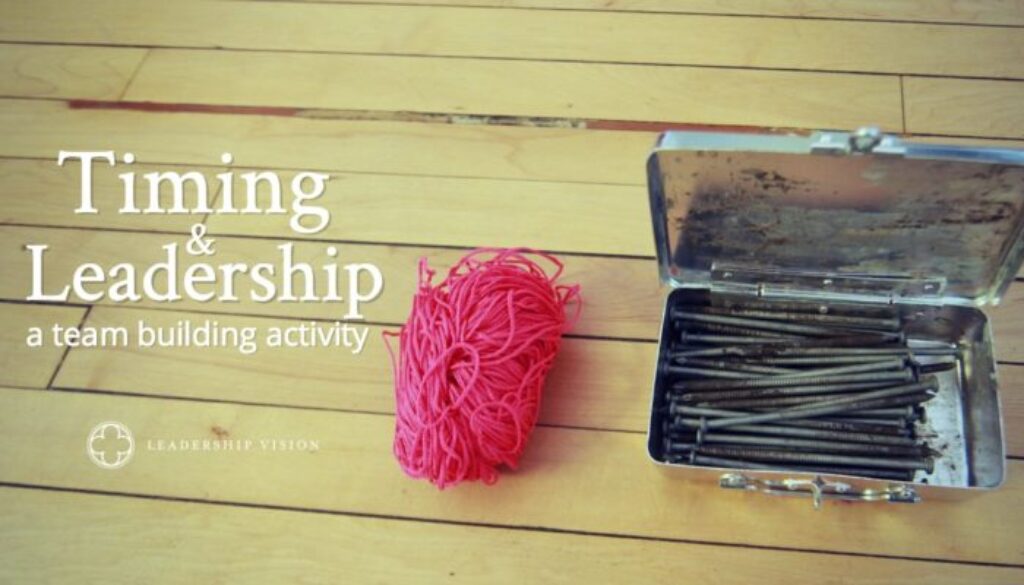Unlocking the Power of Team Building: The Crucial Role of Timing and Leadership
There will come time when it is your turn to lead. Maybe your skills are highly tuned to a particular set of circumstances. Or perhaps you have your hands in a variety of things – helping team members with several tasks.
No matter who you are, you will at some point be asked to lead through cooperation, creating something with others, or even helping walk others through seemingly simple challenges. This is when your set of unique strengths are needed. When it is your time to step up, will you be ready? Will you know how you can contribute the most to your team?
At Leadership Vision, we’re working on a big project right now. For several months, I’ve been working mostly behind the scenes, to get it ready and to a point where the input of others would be needed. In the last few weeks, we launched a beta version and all of the sudden, my Strengths were front and center. I have really seen my Communication Strength at work, within our team as I’ve asked for feedback, but also in the product that was released.
Below is one easy team building activity that will provide examples of your Strengths when they are on and when they are on the sidelines.
Team Building Activity – The Grid Puzzle Maze
This challenge combines the collective strengths of the group, and a very specific time for each individual to participate. Participants will draw both upon their own strengths, as well as the teams.
The objective of this challenge is to construct a maze on the ground, then successfully walk through it according to a secret route that only the facilitator knows.
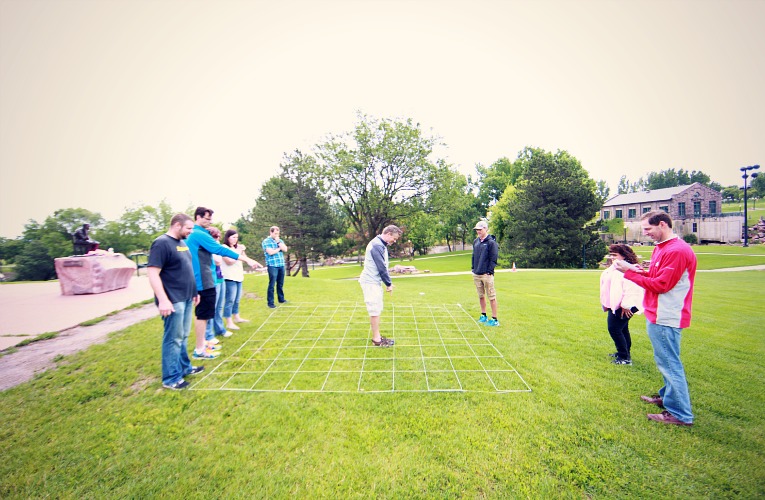
To get started, head to your local dollar store for the following items:
- 2 rolls of mason string or kite string (you’ll need about 200 ft total)
- Approximately 100 six inch nails
This challenge works best outside, on a relatively flat, grassy area. If you don’t have access to something like that, or need to do it inside, substitute surface appropriate tape for the nails.
Instructions
- To begin, tell participants to create a grid that is a 10 x 10 square (see below). Each square should be large enough for someone to stand in.
- Once the grid is complete, tell participants to line up, single file, horizontally along the bottom edge of the grid.
The first person will pick a square, at random, and step into it, while the rest of the team stands on the outside of the grid. There is only one person allowed in the grid at a time.
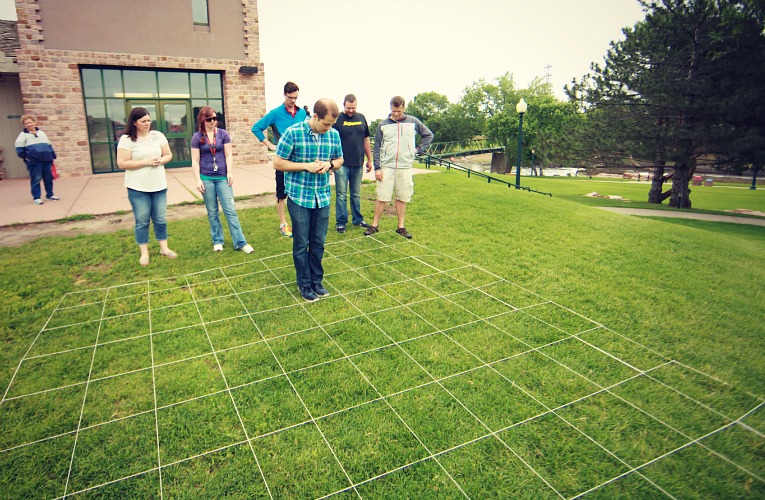
If it is the correct square, as determined by the facilitator, they may select a second, adjacent square, and continue moving through the grid until they guess incorrectly.
They can proceed through the grid any direction (forward, backward, diagonally, horizontally, or vertically), but may NOT skip squares.
When an incorrect guess is made, they step out of the grid, move to the back of the line where the next person starts at the first “correct” square and repeats the process.

Below is a sample “correct” way the teams can traverse the grid. It’s arbitrary, but the facilitator will need to keep track of where team members step. The facilitator can say yes or no as team members step into each square.
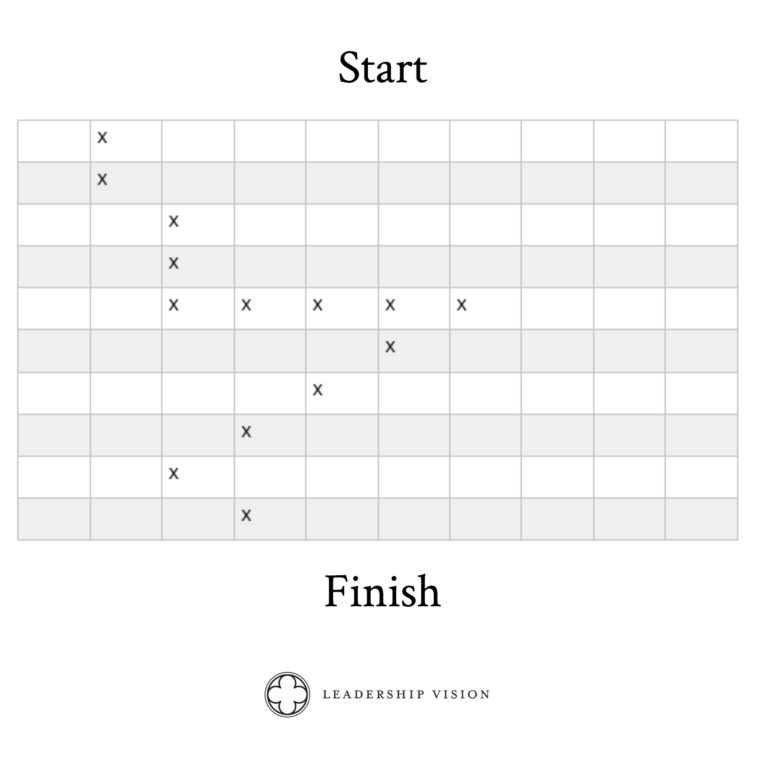
Role of the Facilitator
The facilitator may also find that teams decide to keep track on their own. It’s up to the facilitator to decide if that is allowed. Once, a group used leftover nails to mark their path. Another time, they used mittens, hats, etc.
The facilitator can also find ways to alter the flow of the game. For example, tell the entire team on the outside of the grid to stand with their backs to the grid, so the person in the grid is forced to navigate on their own without the assistance of their team. Or that only one person may provide assistance while everyone else remains silent. Be creative!
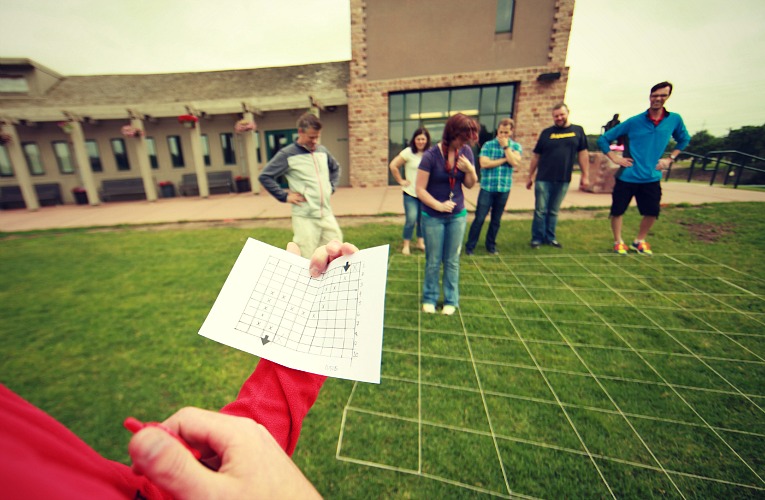
Find ways to challenge the team to work both independently and together.
Suggested Debrief Questions
- How do you prepare yourself to maximize your strengths when it’s time to use them?
- How do your strengths engage when you’re on the sidelines, in a serving role?
- What unique contributions do your strengths make, and when is the best time to contribute them?
The focus here is on timing. In leadership, there is a time to lead and a time to follow. When it’s your turn to follow, how are you leveraging your unique strengths to help the person who is leading? When it’s your turn to lead, how are you relying on the strengths of others (and your own) to finish the task and help the greater good?
Good luck, navigate wisely, and have fun!

